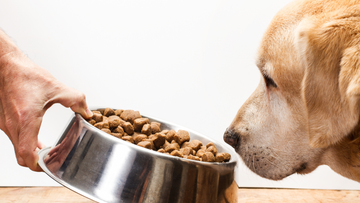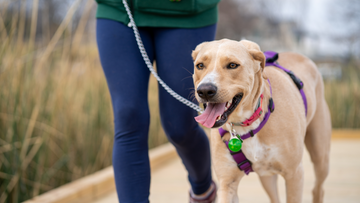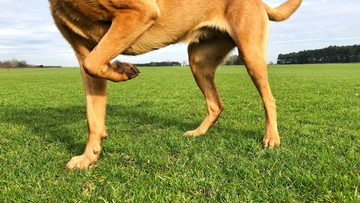When your dog is experiencing pain, you want to do everything you can to help. Injury, infection, and even allergies can make your dog feel uncomfortable. There are two ways to alleviate pain for your dog: prescription pain relief and natural pain relief. Here are some best practices for dog pain management, whether you choose homeopathic pain management or a prescription option.
What causes dog leg pain?
 Dogs are very active, and some are accident-prone. Leg sprains and strains are common in very active breeds. These injuries can also happen if you take an unfit dog for a long hike or run. Like people, if your dog is out of shape, it will be more prone to muscle injury. Overweight dogs are more prone to leg injuries because the excess weight puts more pressure on their joints.
Dogs are very active, and some are accident-prone. Leg sprains and strains are common in very active breeds. These injuries can also happen if you take an unfit dog for a long hike or run. Like people, if your dog is out of shape, it will be more prone to muscle injury. Overweight dogs are more prone to leg injuries because the excess weight puts more pressure on their joints.
At-Home Pain Relief for Dogs
So, what can you do if your dog is experiencing joint pain? You should schedule an appointment with your veterinarian to rule out a more severe issue, such as a broken bone. Once your veterinarian has diagnosed the issue, speak to them about what natural remedies are the best choice for your dog and their situation.
We recommend trying one remedy for one month and watching for improvements. This also lets you identify any adverse side effects quickly. If you notice any side effects, stop the remedy for a few days to see if the symptoms subside before trying another therapy.
Hot & Cold Therapy
For dogs suffering from joint pain or injury, you can apply heat or ice to help ease the pain. Use heat for 20 minutes on and 20 minutes off to help relieve pain associated with chronic conditions. Ice is a good option for acute issues, just as a sprain or post-surgery. Use the ice for 10 minutes on and 10 minutes off to help reduce swelling.
Ginger
Ginger is a well-known remedy for stomach issues in humans and animals and can also help with pain. Rich in antioxidants, gingers helps reduce inflammation in the body. You can add a small amount of freshly grated ginger to your dog’s food.
Turmeric
Turmeric is loaded with anti-inflammatory properties. Many people add turmeric to their diet for pain and inflammation relief. When adding turmeric to your dog’s diet, mix it with healthy fat and add it as a food topper.
Boswellia
Most people know Boswellia as frankincense. This extract comes from the Boswellia serrata tree. Many natural pet stores sell Boswellia pet supplements for joint disease and pain. Make sure to always follow the recommended dosage on the label.
Far-Infrared Therapy (Canine Comfort Suit & Canine Comfort Sleeves)
Far-infrared therapy keeps muscles, joints, tendons, and ligaments supple and relaxed. The Benefab Canine Comfort Suit helps harmonize bodily functions safely and naturally, stimulating recovery time, promoting blood circulation, increasing oxygen flow, and ultimately reducing pain and stiffness. This natural, non-invasive therapy can be used without worrying about adverse side effects. Another great option is the Benefab Canine Comfort & Care Sleeves, which provide the same far-infrared therapy benefits explicitly targeted to the front legs and elbows.
Body Work for Dogs
Acupuncture and chiropractors have been used for centuries to alleviate pain naturally. Acupuncture stemmed from traditional Chinese medicine and involved placing thin needles into specific points in the body to reestablish the body’s natural flow and ability to heal. While this might look painful, the needles are fragile and painless.
Which natural remedy is best for your dog’s leg pain?
While many of these natural remedies can help relieve your dog’s leg pain, some options may not be the right choice. Always consult your veterinarian if you believe your dog is in pain to help determine the underlying cause. They will work with you to create the best treatment plan for your dog. Natural pain remedies should always be used in conjunction with your veterinarian.






















